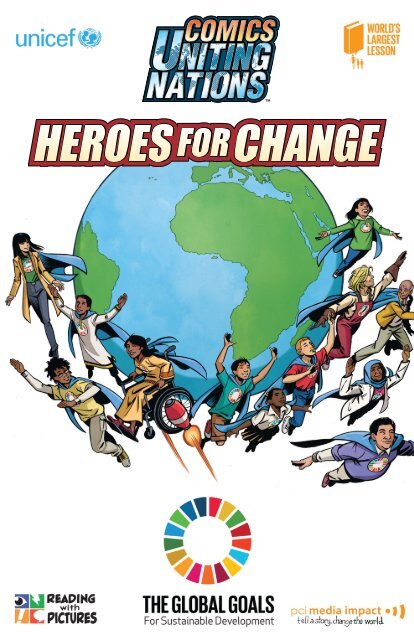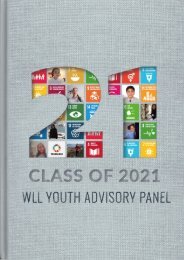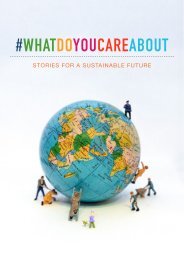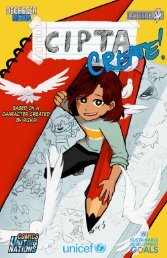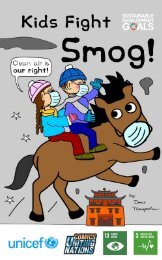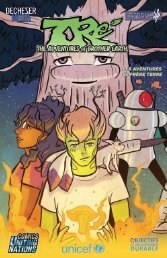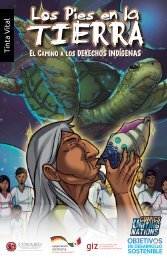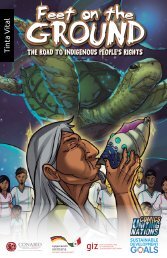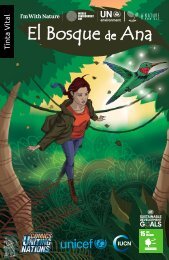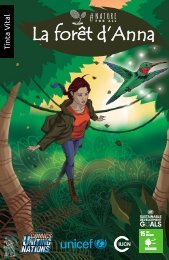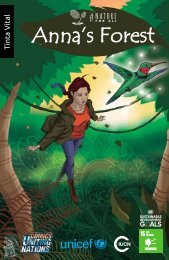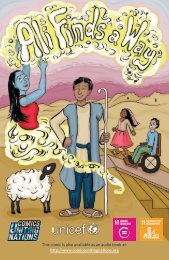Heroes For Change
Comics are effective teaching tools because they require readers to not only passively receive information, but also interact with the text and images to construct meaning, and that is the key to the magic. Words and pictures work together! Our "Heroes for Change" comic introduces the Global Goals and invites children to become superheroes themselves, by taking action to end poverty, inequality and climate change.
Comics are effective teaching tools because they require readers to not only passively receive information, but also interact with the text and images to construct meaning, and that is the key to the magic. Words and pictures work together!
Our "Heroes for Change" comic introduces the Global Goals and invites children to become superheroes themselves, by taking action to end poverty, inequality and climate change.
- TAGS
- unicef
Create successful ePaper yourself
Turn your PDF publications into a flip-book with our unique Google optimized e-Paper software.
Credits:<br />
Comics Uniting Nations: <strong>Heroes</strong> for <strong>Change</strong><br />
Story - Josh Elder, Natabara Rollosson<br />
and Sean Southey<br />
Art - Grace Allison and Karl Kesel<br />
Letterer - Grace Allison<br />
Editorial - Josh Elder<br />
Book Design - Ed Roeder<br />
Translations provided by Translation By Design<br />
Comics uniting Nation: <strong>Heroes</strong> for <strong>Change</strong> copyright © 2015 by Project Everyone, PCI Media Impact and Reading With Pictures.<br />
This material is freely distributed under an<br />
Attribution-NonCommercial-NoDerivatives 4.0<br />
International Creative Commons License.<br />
<strong>For</strong> further information:<br />
www.https://creativecommons.org/licenses/by-nc-nd/4.0<br />
How to Read a Comic<br />
Captions usually<br />
contain narration but<br />
sometimes dialogue or<br />
other text information.<br />
Panels are frames<br />
that each contain one<br />
segment of the action.<br />
Panels can be any shape<br />
or size. Read the panels<br />
from left to right,<br />
top to bottom.<br />
Word balloons contain<br />
character dialogue. The<br />
tail of the bubble points<br />
to the speaker.<br />
Sometimes different<br />
colors, shapes, or fonts<br />
are used to show the<br />
personality of a character.<br />
Gutters are the spaces<br />
between panels. This is<br />
where the reader must<br />
imagine the action from<br />
panel to panel.<br />
Slow down! Read both the text and the pictures.<br />
Think about what is happening between the panels.
World’s Largest Lesson is a collaborative education project to support the announcement<br />
of the United Nations Global Goals for Sustainable Development. The project is living proof of<br />
the importance of Global Goal 17 “Partnerships for the Goals” and would not have been possible<br />
without the help of all of our partners working with us and with each other.<br />
Thanks to our Founding Team:<br />
Powered By: Distributed By: Translated By:<br />
And special thanks to those who have worked with us across the world:<br />
Lesson plans created in collaboration with Think Global www.think-global.org.uk. Promoting learning for a just<br />
and sustainable world.


